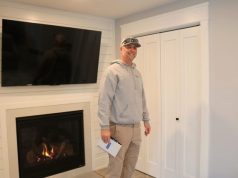The pandemic has had a profound impact on our world, the scope of which we have not fully examined yet. A topic of conversation that has had the most relevance among thought leaders is the structural educational inequalities that the pandemic has brought into light.
The impact of the pandemic is far reaching, but those who have been the most disproportionately affected are individuals from lower-income and traditionally underserved communities.
Dr. Jarvis Sanford of Chicago is a proponent for upholding equity in public education by examining ways that administrators and community members can improve processes and address structural issues.
Here, Dr. Sanford explores a few of the most glaring inequalities that have been emphasized by the pandemic as well as a few of the steps necessary to help students through these obstacles.
Disparities in Access to Technology and Online Resources
One of the biggest issues throughout the earliest stages of the pandemic was the variance in access to both technology and educational resources. The issue has existed for quite some time and has been part of the larger conversation of educational inequity, but the pandemic highlighted the issue through the speed that schools needed to adapt to address the virus.
Most schools did not have proper time to prepare for the lockdowns and quarantines that we have come to associate with the early months of the pandemic. Even well-funded schools had a variety of issues such as tech problems, lowering levels of academic engagement, and students falling behind in key areas of their education.
There are many reasons that experts believe the technological divide has prevented certain students from receiving the best education possible through the pandemic. One of the most glaring is access to technology such as laptops and high-speed internet access that would prove crucial for success during online classes. The schools least prepared to facilitate the switch were those that were underfunded and lacked the resources to get students everything that they would need to reach learning goals.
Conditions of Schools Preventing In-Person Learning
In some cases, dilapidated conditions of the schools prevented students form underserved communities from returning to in-person learning even long after their peers in more affluent districts returned.
This was the case in several communities within Chicago, but the scope of the issue reached areas as far as Paterson, NJ, Philadelphia, and a variety of other communities across the country. Schools that were in a steady state of disrepair prior to the pandemic were deemed unsafe during inspections performed while schools were empty for online learning.
Schools serving low-income children were much more likely to remain closed, and schools still struggle to find funding that will make buildings safe by being free of pests, asbestos, and mold. Funding has remained a large issue impacting the quality of buildings and education, and experts have realized that the magnitude is much worse than many would have believed before the pandemic.
Dr. Sanford speaks to how these funding inequalities are not new, however. Back in 2019, analysis of 2016 funding for schools revealed that majority white districts received $23 billion more than predominantly nonwhite districts to serve the same number of children.
Some experts have suggested that this is due to differences in how much money wealthy areas pay in taxes, but this still reflects that the issue is how our funding systems are based so heavily on geography. These findings bring further relevance to the thought process that your ZIP Code plays a monumental role in your access to opportunities.
Black and Hispanic Students Falling Behind in Key Academic Subjects
As the pandemic continues, we are seeing billions of dollars in federal aid coming to schools to address learning loss. While data is still being compiled to fully understand the scope of the issue, the premise is clear- students across the country are performing worse on assessments for subjects such as math and reading. Black and Hispanic students and lower-income students are notably falling behind at higher rates.
In Chicago, leaders spoke to how lower test scores and attendance were a growing issue impacting the education of Black and Latino students- especially the case for boys.
The Philadelphia area has seen similar figures, with Camden, NJ noting a 30% decline in mastery of math and language arts concepts at a high school level and a sharp increase in students failing classes in academically struggling school districts.
There are many reasons why experts believe we are seeing students fall behind in key areas of their academic education. While reasons such as the technological divide and the state of certain schools certainly contribute to the issue, other obstacles exist such as the CDC’s assertion that systemic health and social inequities give racial and ethnic minority groups a higher risk of developing negative health outcomes from COVID-19.
These issues, further complicated by the pandemic, have an impact on many factors of students’ lives, impacting their mental health and having a sustained negative effect on their ability to pursue academic success.
How Can Communities Address Structural Inequalities Impacting Our Young People?
The question of how to address structural inequalities that affect students’ access to education and the quality thereof is a massive one for administrators and thought leaders across the country. There is a reason why this has been the subject of many panels and ongoing discussions both before and during the health crisis.
Dr. Sanford recognizes that one very important step of the process is acknowledging the perpetuation of these issues and our role in them. Largely these issues are allowed to spiral out of control because our perspective limits us to our own experience- out of sight out of mind.
Still, Dr. Sanford and many leaders addressing the importance of academic equity across race, class, creed, and color note that actionable methods for change are crucial at this definitive moment in history.
Our communities need mentors, teachers that are interested in the growth and development of our young people, and to be backed by members of the community that look out for one another as much as possible. Many community members that can afford to do so are looking at organizations already performing hard work in their community both to volunteer and donate to expand the scope of their resources.
It is the hope of many organization leaders that the pandemic has shined a light on the many obstacles that we need to improve for the betterment of future generations- as well as the roles that we can play in bringing these improvements into fruition.








